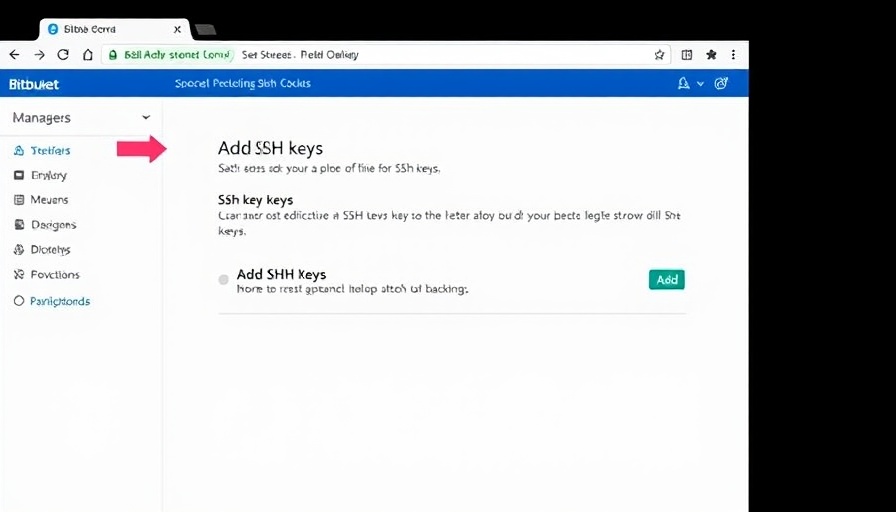
Unlocking the Power of Signed Commits with SSH Keys
In a significant move to enhance security protocols, Bitbucket Cloud has now introduced the ability to sign commits using SSH keys. This new feature allows developers to authenticate the integrity of their contributions more robustly, fostering trust in collaborative coding environments where authenticity is paramount.
Why Signed Commits Matter
Signed commits act as a secure stamp, verifying each change in a repository. This capability is especially crucial for organizations that prioritize compliance and security. With SSH keys, the verification process becomes even more streamlined, ensuring that every developer’s contributions can be traced back to them without ambiguity.
A Step-By-Step Guide to Get Started
Getting set up with signed commits is an easy process:
- Navigate to your Personal Bitbucket settings to configure your SSH keys.
- Add the SSH key related to your Bitbucket account, allowing it to sign your commits.
- Once configured, ensure each commit is signed using the newly set key. Bitbucket will then validate this signature and display a 'Verified' status for authenticated contributions.
Furthermore, a handy feature allows users to set an expiration date for SSH keys, offering an additional layer of security.
Advancing Repository Control and Security
For repository admins, enforcing signed commits becomes an essential step towards maintaining repository integrity. This feature allows setting consistent security policies, making it dramatically easier to safeguard against unauthorized changes. In a rapidly evolving coding landscape, ensuring that commits are signed is an effective method to mitigate vulnerabilities that can arise from unsigned contributions.
The Road Ahead: Future Enhancements
As Bitbucket continues to innovate, look forward to more features that will improve how developers interact with the platform. Upcoming updates promise to incorporate system-signed commits and extend functionalities, like handling merges and UI-driven commits, thus further strengthening the structure of collaborative coding.
Your organization relies on robust and secure code management. By embracing signed commits, you can elevate security, promote transparency, and ensure comprehensive traceability across your projects. Isn't it time you strengthened your development workflows with this essential feature?
 Add Row
Add Row  Add
Add 




Write A Comment